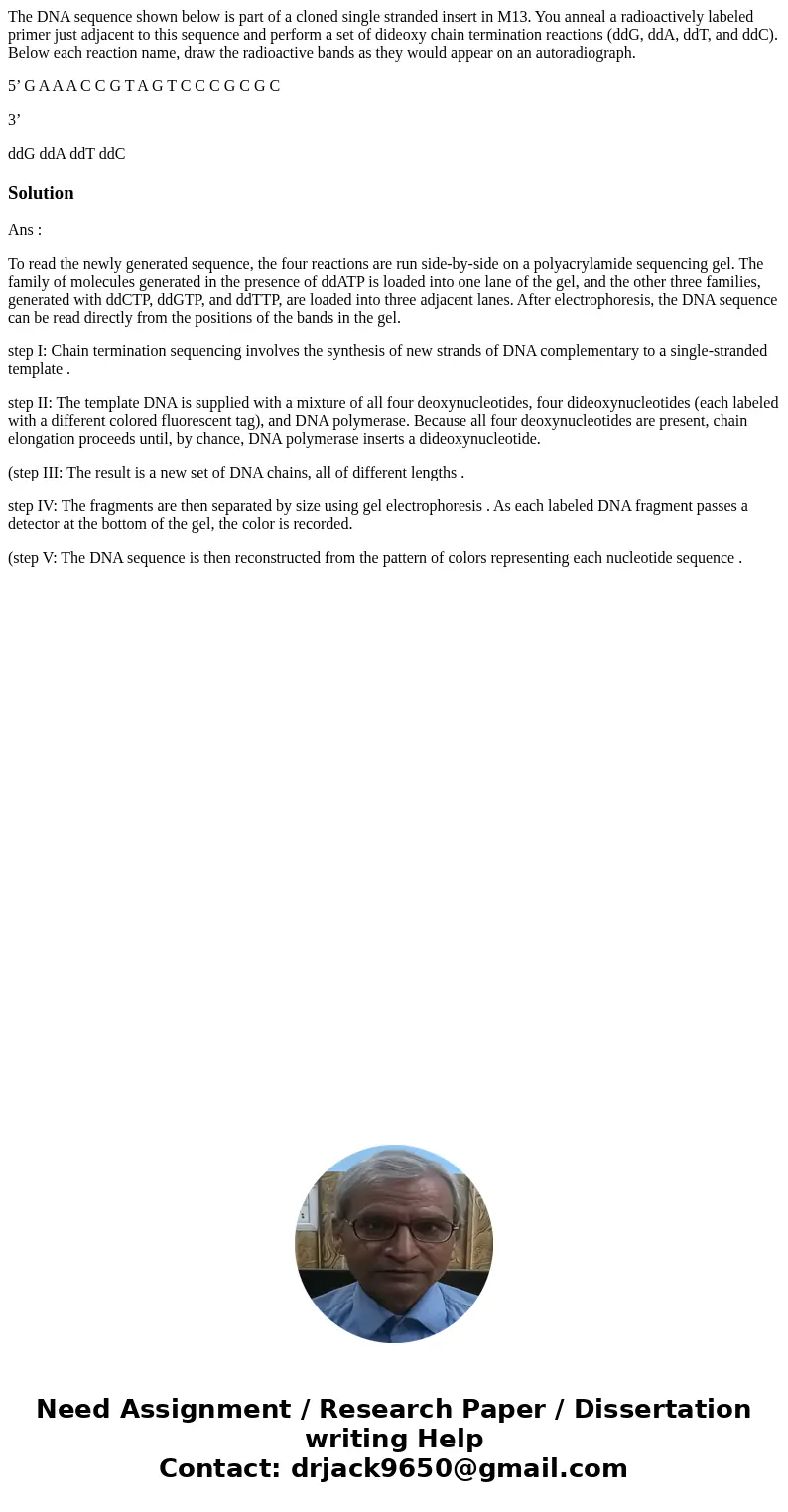The DNA sequence shown below is part of a cloned single stra
The DNA sequence shown below is part of a cloned single stranded insert in M13. You anneal a radioactively labeled primer just adjacent to this sequence and perform a set of dideoxy chain termination reactions (ddG, ddA, ddT, and ddC). Below each reaction name, draw the radioactive bands as they would appear on an autoradiograph.
5’ G A A A C C G T A G T C C C G C G C
3’
ddG ddA ddT ddC
Solution
Ans :
To read the newly generated sequence, the four reactions are run side-by-side on a polyacrylamide sequencing gel. The family of molecules generated in the presence of ddATP is loaded into one lane of the gel, and the other three families, generated with ddCTP, ddGTP, and ddTTP, are loaded into three adjacent lanes. After electrophoresis, the DNA sequence can be read directly from the positions of the bands in the gel.
step I: Chain termination sequencing involves the synthesis of new strands of DNA complementary to a single-stranded template .
step II: The template DNA is supplied with a mixture of all four deoxynucleotides, four dideoxynucleotides (each labeled with a different colored fluorescent tag), and DNA polymerase. Because all four deoxynucleotides are present, chain elongation proceeds until, by chance, DNA polymerase inserts a dideoxynucleotide.
(step III: The result is a new set of DNA chains, all of different lengths .
step IV: The fragments are then separated by size using gel electrophoresis . As each labeled DNA fragment passes a detector at the bottom of the gel, the color is recorded.
(step V: The DNA sequence is then reconstructed from the pattern of colors representing each nucleotide sequence .

 Homework Sourse
Homework Sourse